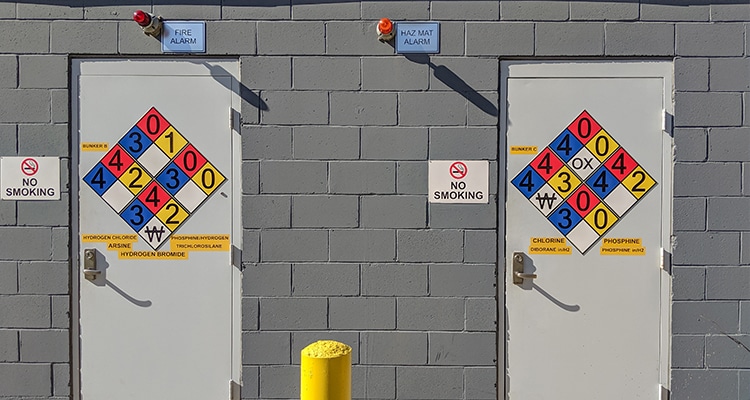Choosing the right chemical inventory software can be a difficult and time-consuming process. This guide is written to help give you a head start. It focuses on some of the key points that should be considered as a part of the chemical inventory software selection process. It’s not intended to be comprehensive; the goal is simply to help you create an organized plan to select the most appropriate software for your organization.
Select the right software vendor and the benefits will be made clear and quickly. Take some time to consider the questions that you should be asking before you get started. For instance, what are the essential features that your organization requires, absolutely must-haves in a software solution versus nice to have? What is your desired implementation timeline? What is your budget and is it realistic vis-à-vis your requirements? Will a new software technology be accepted within your entity’s culture? Will you be able to allocate resources to support a new software implementation?
What is the foundation of a functional chemical inventory management software program?
Tracking chemicals is different from tracking other types of inventories since you need to track both the containers and the hazards associated with them. The inventory system must keep track of what’s coming in and what’s going out, where it is (safely) stored and who works with and around those chemicals. It will track product quantities in real or near real-time (preferably using barcodes and mobile devices with scanners), container sizes, as well as locations (and movement between locations).
Tracking hazardous chemicals is more challenging due to the inherent risks associated with storing and handling hazardous materials. There are standards that help identify both physical hazards and health hazards, for example, NFPA, HMIS, and GHS just to name a few. These standards allow you to assess the risks associated with each chemical or combination of chemicals to determine where and how these materials are stored, handled, and disposed.
How many different chemical products does your organization work with?
This is one of the first questions that should be asked. The number of chemicals you order, store, use and dispose will determine the magnitude of the project, implementation timelines, and, obviously, cost. Taking a quick survey of the volume and frequency of chemical purchase and use, and sharing that information with your software vendor of choice will be very helpful.
Ease of use, why is this so important?
Any chemical inventory program worth considering should be easy to learn and easy to use. If not, end-user acceptance will be impacted. The most useful software has an approachable user interface and offers a positive user experience. While it’s true that the best chemical inventory management systems have many features, it’s important to be able to make it simple and approachable for individual users depending on their job role. Operational tools such as dashboards and workflows that enable or disable specific features and functions make the system easier to learn and use.
Safety Data Sheets (SDS)
A good chemical inventory system should tightly integrate container tracking with the corresponding Safety Data Sheets (SDS). Your SDS tool should have everything needed to create an online library of safety data sheets that is easily accessible and complies with OSHA guidelines and EPA requirements. It should also be capable of linking the underlying SDS information to individual containers. Why is this so important? Because it will allow you to configure and enforce storage and handling rules. For example, you might want to set up a rule that limits the amount of flammable material that’s allowed at a given location, or you may want to prevent incompatible chemicals from being stored in close proximity, or you may want to track expiration dates, particularly for peroxide formers. The use cases go on and on, but it all starts with being able to identify the underlying risks associated with each individual container.
What about barcoding?
Should you use barcodes or not? The short answer is yes, as barcodes will allow for easier tracking with greater precision that helps keep inventories current. If you don’t already use barcodes, this will take some effort to implement. If, on the other hand, you are just starting out with a chemical inventory, this process is much easier. Either way, a good chemical inventory system should allow for working with or without barcodes, and that extends to having a useable inventory reconciliation system in place for either approach. If you opt for barcodes, which we recommend, the program should be able to work with preprinted labels or be able to print labels on-demand.
The importance of periodic inventory reconciliations
No matter how good your software and processes are, human error will always be a factor in chemical inventory management. Well-defined procedures, best practices, and training can mitigate these circumstances; nevertheless, you will want to periodically audit your inventory for accuracy. The software you implement should include a robust inventory reconciliation feature, ideally in conjunction with mobile applications. If you’re using barcodes, the inventory reconciliation is usually quite straightforward, but if you are not using barcodes then you will want to make sure that the software has alternative procedures specifically designed for chemical reconciliation.
Another thing to consider is who will be performing the inventory reconciliations? Will they be centralized or decentralized? Large organizations will most likely need to decentralize the task, i.e., make the container owners or individual departments responsible. Small and mid-sized organizations can potentially have a dedicated team do the inventory reconciliation for the entire facility. The software should allow for either approach.
The benefits of mobile applications
Working with chemicals often happens in places where computers are not within reach and where immediate access to information is essential. In these circumstances, mobile devices can offer huge benefits, so much so that they are often considered a mandatory requirement in the software selection process. Portable devices can be used to read container barcodes and conduct chemical inventory actions like moving or consuming containers as well as performing inventory reconciliations. Most importantly, every employee in your organization should have immediate access to SDS on their smartphones or tablets.
What about regulatory reporting?
Staying in compliance with international, federal, state, and local environmental regulatory requirements is becoming increasingly complex. With that comes increased workloads to properly comply. Does the software automate the regulatory reporting process? This can be a big factor for some organizations. Since some chemicals are reportable and others are not depending on volume and hazard level, the software needs to be able to compile reports accordingly. Adding to the complexity, some chemicals are reportable regardless of the quantity on hand while others are reportable if you exceed a certain threshold. Additionally, reports must be formatted to meet the regulatory agency’s specifications, and in some cases submitted via an online portal. Getting all of this right is not easy, and we haven’t even touched on the accuracy of the data being reported. This is critical and will be addressed in great detail when an inspector comes on site. For instance, under a Fire Marshall inspection, the auditor asks, “Give me a report of all chemicals in this location that match the reported chemicals.”
We covered the must-haves, what about the nice-to-have features?
The features listed above are often considered “got-to-have” features, but what about the “nice-to-have” features. The list is going to vary from organization to organization, but some of the things that you might want to add to your checklist include:
- Chemical Authorization and Approvals
- Custom Management Reports that Users Can Create Themselves
- Surplus Chemical Management
- Inventory Limits and Reorder Notifications
- Chemical Purchasing
- Integration with Hazardous Waste
- Reduce Operational Costs as Well as Corporate Liability
How long will it take to get the software in place?
How long will it take to get the software in place, train the users, and have a production-ready system? The timeline can be determined by both the software vendor as well as your organization. Are you ready? Do you have a good inventory, even if it’s captured in Excel spreadsheets? What resources is the software vendor willing to commit to ensure a smooth deployment that does not fall behind schedule? Does the software vendor have the expertise to guide you through the deployment process and solve problems that are going to inevitably come up? For large operations, expect a 3 to 9-month implementation timeline, and for smaller operations 1-3 months. This will vary depending on the details.
How much will it cost?
Cost is always at or near the top of the selection criteria list. When evaluating the cost, the most basic factor is what you get, and more importantly what you don’t get. This includes both support and features. Are you foregoing any critical requirements because your budget does not allow for software that best meets the needs of your organization? Often, the vendor will work with you to structure the software licensing and deployment so that it does not exceed your budget. Does the software vendor allow for mixing and matching license types so that you can tailor them to the types of users? Also, it’s not unusual to have a higher upfront cost in the first year to allow for implementation costs. Is it possible to structure the contract so that this cost is spread out more evenly over a multi-year schedule?
Through Lifecycle Chemical Management, Chemical Safety offers the implementation of processes at every level in the organization that makes the workplace safer, compliance is achieved easily, and operating costs are streamlined. By adopting such practices for chemical management, EHS departments bring a strategic advantage to every organization, reduce legal liability, and offer measurable benefits across every department. Chemical Safety’s Environmental Management Systems (EMS) has been the industry’s most mature and comprehensive software solution. With more than 30 years of experience, thousands of deployments, and tens of thousands of active users, Chemical Safety has a solid history of successful implementations and satisfied customers with many of the largest corporate and government entities in the US and beyond. If you want to learn more about Chemical Safety’s offerings, contact us at sales@chemicalsafety.com



